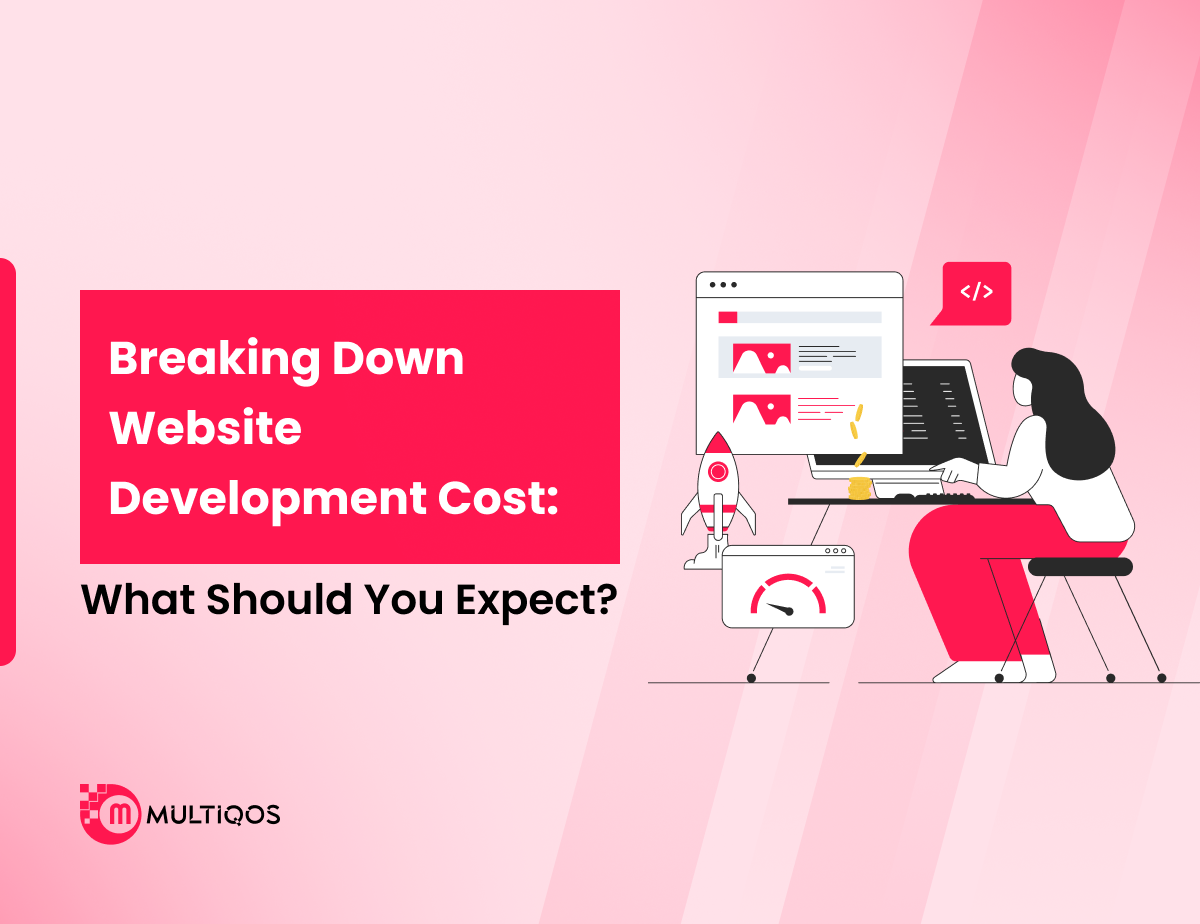11 Best AngularJS Frameworks for Web Development in 2025

Introduction
Did you know that 0.05 seconds is enough to make a user either stay or navigate away from your site? Since first impressions are design-related for 94% of the time, it is crucial to employ suitable ones.
It is with them that one can ensure that they will be making a strong impression. So, there is a necessity to select a framework and design to do that. It is necessary to create a comfortable interface and minimalistic design at the same time.
Among web frameworks, AngularJS can be noted as one of the most advantageous due to its simplicity, speed, and effectiveness of functioning. AngularJS is expected to help development. It enables developers to create complex applications without leaving the underlying architecture.
AngularJS was developed by Google in 2012 and since then it has been one of the top frameworks used in mobile and web applications. Because of these factors such as flexibility, scalability and simplicity it has become one of the most vital front end technologies.
In web development, most front-end frameworks have now embraced complexity in application development. AngularJS works well with these tools. A variety of web development frameworks popular among web developers throughout the world are available. They build stunning web applications.
Thus, let’s consider the overview of the best Angular frameworks that can upgrade your web development experience.
But first, let’s discuss what this thing called AngularJS is and its key elements briefly.
What is an Angular Framework?
AngularJS is a Client Side MVC framework used for developing Single Page Applications where an HTML page is used as the main web application interface. Written and supported by Google in collaboration with developers and corporations, AngularJS optimizes the development and testing phases with the help of the client-side MVC and MVVM architectures.
It also contains application coded elements frequently encountered in developing web applications. In 2016, Angular 2.0, commonly referred to as Angular, was released. This version is built with TypeScript and is designed to develop modern, efficient SPAs.
When we talk about AngularJS frameworks, we’re referring to a range of supplementary frameworks or libraries that integrate with AngularJS. These tools are designed to enhance AngularJS by adding extra functionalities, streamlining tasks, or meeting specific development needs.
Note: While many of these frameworks are optimized for AngularJS, some can also be used with other technologies like ReactJS.
Next, we’ll delve into the top AngularJS frameworks and UIs that can elevate your web development projects!
Top 11 Frameworks and UIs for Angular Development
As the demand for scalable and dynamic web applications continues to grow, Angular remains the top choice among developers. The flexibility, robustness, and strong community support of the framework made it the go-to solution for building modern web applications.
Here, we’ll explore the top 11 frameworks and UIs for Angular development, highlighting their key features, advantages and drawbacks.
1. Mobile Angular UI
Mobile Angular UI is a user interface framework designed to facilitate access to mobile-friendly applications by integrating AngularJS and Bootstrap. It provides essential mobile features such as switches, overlays and sidebars, and makes it easy to convert desktop web apps into mobile apps.
Type: User Interface
Features:
- It includes essential mobile components like switches, overlays, sidebars, and scrollable areas.
- Lacks jQuery dependencies and the bulky Bootstrap JS, making it easier to work with.
- Seamless switch between desktop and mobile applications, simplifying the conversion of desktop apps into mobile-friendly versions.
- Tailored Bootstrap components to meet specific needs.
- Built-in support for touch events, which is crucial for modern mobile web applications.
Advantages:
- Specifically designed for creating mobile apps that work flawlessly across various devices.
- Combines the strengths of Bootstrap and AngularJS.
- Auto-adjust layout feature helps in building responsive mobile applications, especially on diverse mobile devices.
- Lightweight, enabling the creation of efficient applications.
- Easy learning curve, especially for developers already familiar with AngularJS and Bootstrap.
Drawbacks:
- Built on top of AngularJS, limiting compatibility with other frameworks or newer versions of AngularJS.
- Dependence on Bootstrap might not be ideal for projects requiring different UI frameworks or custom design solutions.
- While ideal for mobile apps, it may not suit projects requiring comprehensive desktop web applications.
- Limited resources, third-party integrations, and tutorials compared to more popular frameworks.
2. Ionic
Ionic is a powerful SDK for creating cross-platform mobile applications using AngularJS. It provides advanced tools and resources for creating highly interactive, native-looking mobile applications.
Type: Framework
Features:
- Write once and deploy everywhere, whether on Android, iOS, or the web, with Ionic SDK.
- Ionic’s mobile CI/CD products streamline development and deployment.
- Vast array of UI components for building visually appealing and functional mobile interfaces.
- Easy creation of native-like applications using Cordova plugins to access mobile features like cameras, GPS, etc.
- Live reload capability for faster development.
- Powerful command-line tools for creating, building, testing, and deploying applications.
- Integration with Capacitor, Ionic’s native runtime layer, for accessing native device features.
Advantages:
- Develop applications for multiple platforms using a single codebase.
- Comprehensive set of pre-designed, customizable UI components adhering to native app standards.
- Strong community support with abundant learning resources, plugins, and third-party tools.
- Optimized for performance, ensuring fast and efficient applications.
Drawbacks:
- Dependency on advanced web capabilities may result in performance issues on older devices and platforms.
- Steep learning curve, requiring familiarity with Angular and TypeScript.
- Heavier compared to purely native apps, potentially impacting load times and performance, especially in complex applications.
- Poor dependency management, which can lead to complications during development.
3. LumX
LumX is a front-end framework based on Google’s Material Design, helping developers create applications with standardized UI/UX. Built with Bourbon, Neat, and Sass, LumX offers a rich set of customizable features and is the first framework to base itself on AngularJS while adhering to Google Material Design principles.
Type: Frontend Framework
Features:
- Build more manageable styles with Sass CSS preprocessor.
- Various UI components allow for extensive customization of web applications.
- Leverages Bourbon mixin library and Neat grid system for streamlined development.
- Simplified management and updating of web dependencies using Bower.
Advantages:
- Adheres to Google’s Material Design guidelines, ensuring a modern, user-friendly interface.
- Responsive design makes it optimal for applications running seamlessly across multiple devices.
- Lightweight, enabling the development of fast and efficient applications.
Drawbacks:
- Smaller community compared to larger frameworks, leading to fewer resources and support options.
- Strict adherence to Material Design may limit design flexibility for projects requiring a different aesthetic.
- Requires familiarity with technologies like Sass, Bourbon, and Neat, which might add to the learning curve.
- Not as frequently updated as other JavaScript frameworks, potentially leading to compatibility issues.
4. Angular Material
Angular Material is a UI component library that uses Google’s Material Design specification. It provides reusable UI components that ensure your applications look good, consistent and functional.
Type: User Interface Module
Features:
- Prebuilt themes with easy customization options to align with brand guidelines.
- Flexible layout system for developing highly responsive applications.
- Diverse range of navigational elements and form controls to enhance interactivity.
- Supports animations and theming for graphical toolkits aimed at designing user interfaces.
Advantages:
- Compliance with Google’s Material Design standards helps maintain design coherence and ensure a well-structured interface.
- Comprehensive package of UI elements with pre-built responsive designs suitable for easy customization.
- Focuses on practicality, on making applications that will be as accessible as possible to as many individuals as possible.
Drawbacks:
- Requires an understanding of Angular and Material Design principles to be effectively utilized.
- Compliance with Material Design guidelines might not be suitable for all projects.
- Inclusion of numerous material components can lead to performance overhead, particularly in large-scale applications.
- Updates and changes in Angular can directly impact the use and functionality of Angular Material.
5. Quantum UI
Quantum UI is known for its modular approach, offering a variety of AngularJS directives and services. It’s particularly useful for creating complex application interfaces with ease and efficiency, making it a go-to choice for developers aiming to build intricate UIs.
Type: User Interface
Features:
- Diverse set of directives to meet various UI needs.
- Theming capabilities for consistent styling across applications.
- Range of animations and effects to enhance user interface.
Advantages:
- Modular components allow developers to pick and choose what they need, contributing to a lighter application.
- Complete customization flexibility for tailoring your application’s UI.
- It makes the work of creating complex UIs easier.
Drawbacks:
- Due to the expansive list of components and diverse customizations, Users may initially find that there is a high entry barrier into the system.
- Fewer cases, less amount of documented support from the community compared to other frameworks that have been around for longer.
6. Angular UI Bootstrap
Angular UI Bootstrap is a given set of markup and CSS framework with native directives for AngularJS. Angular Bootstrap, which is part of the AngularJS UI Toolkit suite, is highly suitable for developers who have previously used Bootstrap and wish to utilize it in their Angular JS projects.
Type: Angular User Interface
Features:
- Bootstrap components like modals, dropdowns, and tooltips are included.
- Highly customizable to meet specific project needs.
- Simplifies UI development for those familiar with Bootstrap’s components and classes.
Advantages:
- Native AngularJS integration allows for seamless and consistent behavior within AngularJS applications.
- Eliminates the need for jQuery, relying solely on AngularJS for functionality, simplifying development and reducing overhead.
- Provides a comprehensive suite of Bootstrap components re-implemented as AngularJS directives for quick UI development.
Drawbacks:
- Requires careful attention to compatibility between Bootstrap and Angular UI Bootstrap versions, especially with evolving Angular and Bootstrap versions.
- Inclusion of numerous components and styles might impact performance in larger applications.
7. Angular Foundation
Angular Foundation is modeled after the Foundation framework, providing a set of directives to quickly build responsive applications. It combines AngularJS’s strengths with Foundation’s responsive design elements, offering a lightweight and flexible solution for developers.
Type: Frontend Framework
Features:
- Responsive design components for building applications that are adaptable to various devices and screen sizes.
- Incorporates accessibility features from Foundation, enhancing inclusivity.
Advantages:
- Integrates Foundation framework with Angular to build responsive and mobile-first applications.
- Offer a flexible alternative to heavy UI design with a focus on flexibility and performance.
- It integrates AngularJS and Foundation to create a user-friendly interface that works and adapts to a variety of device sizes.
Drawbacks:
- Learning curve for developers unfamiliar with the Foundation framework.
- Smaller community compared to other frameworks.
- Compatibility challenges with the latest versions of AngularJS and Foundation as they evolve independently.
8. Angular UI Grid
Angular UI Grid is a detailed grid system for the implementation of grid based UIs in the angular JS applications. It has features of sorting, filtration, and grouping and therefore well suited data utilization applications as well.
Type: Angular User Interface
Features:
- Enables users to sort and filter data within the grid, enhancing usability and data management.
- Supports pagination and infinite scrolling for handling large datasets effectively.
- Allows for in-place editing of grid data, facilitating quick and easy updates.
- Provides functionality to export data to formats like CSV, making data reporting and analysis more accessible.
Advantages:
- Optimized for handling data manipulation tasks, which makes them suitable for use in applications that deal with massive amounts of data.
- Includes query operations such as sorting, filtering, pagination, and grouping as pre-built functions.
Drawbacks:
- Extensive feature sets results in a steep learning curve.
- Handling large datasets or implementing complex features can impact performance, requiring careful optimization.
- May introduce unnecessary complexity for simple applications.
9. PrimeNG
PrimeNG is a popular UI component library primarily associated with Angular but also offers valuable features for AngularJS applications. It provides a rich set of UI components and themes, catering to a range of application needs.
Type: Collection of User Interface Components
Features:
- Includes a variety of components such as tables, charts, forms, and menus.
- Advanced form inputs and data presentation options for complex applications.
- Extensive themes and templates for easy customization of the look and feel.
Advantages:
- Offers a broad range of UI components, providing a comprehensive toolkit for UI development.
- Benefits from a strong community and active development, ensuring regular updates and support.
- Easy customization of web app aesthetics with numerous themes and templates.
Drawbacks:
- Requires keeping up with AngularJS’s latest versions to ensure compatibility and leverage new features.
- The inclusion of numerous components and features can affect performance, particularly in large-scale applications.
10. Radian
Radian is an open-source JavaScript library designed to build scalable applications. It uses AngularJS to implement custom HTML elements and enables two-way data binding between HTML and JavaScript elements. It excels in handling large datasets and complex UI components.
Type: JavaScript Library
Features:
- Capable of managing complex UI components and large data sets.
- Utilizes Asynchronous Module Definition (AMD) for efficient script loading, improving performance.
Advantages:
- Designed for enterprise-level projects, making it suitable for large-scale applications.
- Efficient script loading with AMD enhances performance, especially in complex applications.
Drawbacks:
- As a more specialized technology, Radian may have a smaller community and fewer resources compared to more widely-used frameworks.
- The additional features geared towards complex applications can introduce overhead for simpler projects.
11. Suave UI
Suave UI is tailored for developing web-based user interfaces with AngularJS. It offers various CSS definitions, directives, and services to simplify the UI construction process.
Type: Angular User Interface
Features:
- Includes a set of CSS definitions for standard UI elements, providing a base for application styling.
- Features a grid system for layout management, essential for creating responsive web designs.
Advantages:
Emphasizes user interface design, helping developers create more visually appealing and user-friendly applications.
Provides a collection of UI components for quickly building interfaces.
Drawbacks:
- Compared to other UI frameworks, Suave UI may be less comprehensive in terms of features and components.
- Design flexibility might be limited compared to more robust frameworks.
Whether you’re building a mobile app, a responsive web application, or a complex data management tool, there’s likely a framework or UI library on this list that fits your needs.
Our Expertise in Angular Frameworks
If you’re considering AngularJS or its related frameworks for your next project, connecting with a specialized AngularJS development company can provide invaluable assistance.
Experienced angular JS developers can help you craft a robust strategy and build a fast, responsive web application tailored to your specific requirements.
Are you searching for an implementation partner to help build engaging and transformative web applications? The team at MultiQoS is ready to provide the technical expertise you need. Reach out to us to discuss your project and explore how we can assist in bringing your vision to life.
At MultiQoS, we pride ourselves on having a team of expert front-end developers skilled in evaluating and implementing frontend architectures using Angular. Our dedicated developers focus on crafting intuitive and visually appealing user interfaces, ensuring an enhanced user experience across all devices.
As a leading web development company, MultiQoS boasts some of the top Angular developers in the country. We provide comprehensive services covering Frontend, Backend, Database, Cloud, Testing, and DevOps, leveraging top-tier tools used by major global businesses.
Conclusion
Each Angular framework offers a range of components and elements suited to various needs. To choose the right one, it’s essential to analyze the specific requirements of your web application, select an appropriate technology stack, and integrate Angular UI components as needed. With ongoing advancements in Angular frameworks, many companies seek expert Angular development services to meet the growing demand for skilled developers.
FAQ on Top AngularJS Frameworks for Web Development
Ionic, Angular Material, and Angular UI Bootstrap are considered top Angular frameworks. All three have high ratings on GitHub, with Angular Material and Ionic also boasting strong communities on Discord.
AngularJS is a framework designed for developing dynamic, single-page web applications. Released by Google in 2010, this JavaScript-based framework enables developers to create highly flexible web applications through features like declarative templates, data binding, and dependency injection. While AngularJS includes components that help build user interfaces, it is more broadly categorized as a framework for building full-featured web applications rather than a dedicated UI framework.
Angular frameworks for UI are specialized libraries or toolsets that provide pre-built components, styles, and functionality to enhance the user interface (UI) of Angular web applications. These frameworks streamline the development process by offering ready-to-use UI elements and design patterns that integrate seamlessly with Angular applications.
Here are benefits of using Angular frameworks for UI”
- Improved Developer Productivity: Pre-built components and tools help speed up the development process by reducing the need for custom coding.
- Better User Experience: These frameworks offer well-designed UI components that ensure a consistent and engaging user experience.
- Code Consistency and Quality: Using standardized components and design patterns helps maintain a consistent look and feel, improving overall code quality.
Yes, many Angular frameworks for UI are designed with responsive design in mind. They ensure that applications look and perform well across a variety of devices and screen sizes, adapting to different resolutions and orientations for a seamless user experience.
Get In Touch






